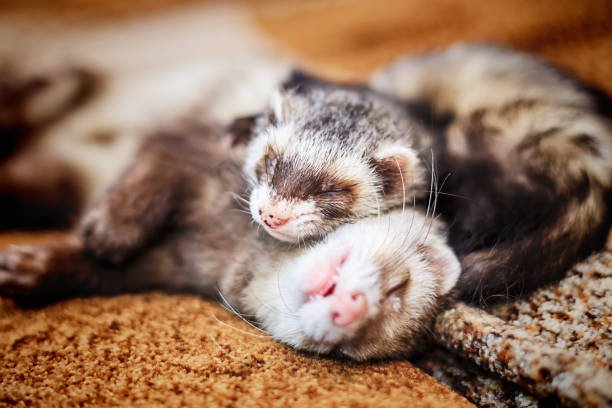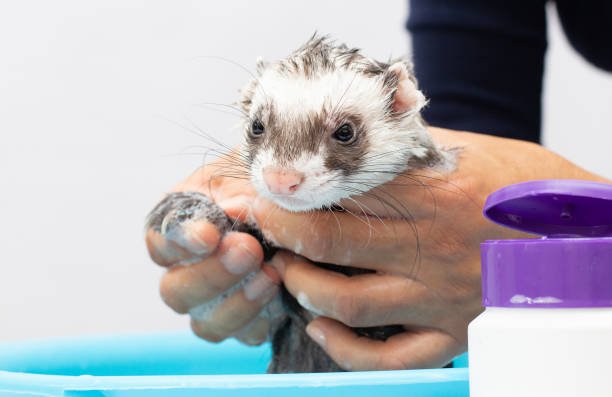How to Take Care of Ferret Fur: Soft, Shiny, and Smelling Sweet!
This post contains affiliate links. This means I will make a commission at no extra cost to you should you click through and make a purchase. Read the full disclosure here.Ferrets are mischievous, playful, and full of energy—but anyone who owns one knows that ferret fur comes with its own set of quirks. Whether it’s that natural musky smell or seasonal shedding, learning how to properly care for your ferret’s coat will keep them healthy, snuggly, and oh-so-huggable.
Unlike hamsters or chinchillas, ferrets have oilier skin and thicker undercoats. This means their grooming needs are a little different—and more hands-on. From brushing techniques to bath-time boundaries, this guide will show you how to care for your ferret’s fur like a pro.
Why Ferret Fur Needs Special Care
Ferrets groom themselves, but not nearly enough to keep their coat in top condition. Here’s why regular grooming is essential:
- Reduces odor by distributing natural oils
- Prevents tangling and matting (especially in long-haired or older ferrets)
- Helps with seasonal shedding (spring and fall)
- Removes dirt, debris, and loose fur
- Detects early signs of fleas, mites, or skin conditions
A well-groomed ferret = a happy, healthy ferret (and a less smelly house)!
Best Tools for Ferret Fur Grooming (Amazon Favorites)
Here are your ferret-fur essentials:
🪮 1. Dual-Sided Slicker & Bristle Brush
🛒 Buy on Amazon
Perfect for gently brushing thick coats, removing loose undercoat, and fluffing the top layer.
🧤 2. Grooming Mitt or Glove Brush
🛒 Buy on Amazon
Great for bonding—ferrets often love being petted with these!
✂️ 3. Round-Tip Grooming Scissors
🛒 Buy on Amazon
For trimming mats, especially on older ferrets or around the tail/belly.
🛁 4. Ferret-Safe Shampoo (Oatmeal or Aloe-Based)
🛒 Buy on Amazon
Use only once a month max, or less. Ferrets shouldn’t be bathed often—it dries their skin!
🗓️ How Often Should You Groom Your Ferret?
- Brushing: 2–3 times per week
- Bathing: Once every 1–3 months
- Nail trimming: Every 2–3 weeks (optional bonus grooming task!)
- Ears & scent glands: Wipe monthly if needed (with vet guidance)
🚫 Over-grooming or over-bathing can strip oils and increase odor—not reduce it!
Step-by-Step: How to Groom Your Ferret’s Fur

1. Set the Mood
Pick a quiet time after play. Use a towel-lined lap or non-slip table.
2. Start Brushing
Use a bristle or slicker brush. Work from head to tail. Brush with the fur’s grain, not against it.
Pay attention to:
- Belly (can get grimy)
- Neck and underarms (common matting spots)
- Base of tail (where oil builds up)
3. Check for Skin Issues
Look for red patches, flakes, sores, or bald spots. These could mean allergies, fleas, or adrenal issues. Consult your vet if unsure.
4. Tackle the Shedding
Ferrets “blow their coat” twice a year. During shedding seasons:
- Brush daily
- Use a deshedding tool (like a ferret-safe FURminator)
- Add linoleic acid-rich supplements (consult your vet)
Bathing a Ferret: What You Should Know

Bathing too often will make your ferret smell worse—it causes the skin to overproduce oils.
Do:
- Use lukewarm water
- Use a ferret-safe, gentle shampoo
- Rinse thoroughly
- Dry completely with a towel and let them air dry in a warm room
Don’t:
- Use dog, cat, or human shampoo
- Use hot water
- Bathe more than once a month (unless directed by a vet)
✨ Bonus: After bathing, expect the zoomies—ferrets go wild with energy after a bath!
How to Reduce Ferret Smell Without Overbathing
Let’s face it—ferrets are a little stinky. But over-washing isn’t the solution. Here’s what helps:
- Clean litter box daily
- Wash bedding weekly
- Brush regularly to distribute oils evenly
- Use an air purifier near the cage
- Try ferret odor-reducing sprays (sparingly)
And remember: Unneutered males tend to smell the strongest. Spaying/neutering helps significantly.
Fur Supplements That Support Healthy Coats
Sometimes, dull or thinning fur is a sign your ferret needs a nutritional boost.
Here are vet-approved options:
1. Marshall Ferret Daily Vitamin Paste
🛒 Buy on Amazon
Rich in linoleic acid and omega-3s for shiny coats.
2. 8-in-1 Ferretvite High-Calorie Supplement
🛒 Buy on Amazon
Great for sick, recovering, or picky eaters.
Talk to your vet before adding any supplements to your ferret’s diet.
When Fur Problems Mean a Vet Visit
Here’s when fur care moves beyond brushes and into medical territory:
- Bald patches or excessive hair loss
- Scabs, flakes, or redness
- Constant scratching or biting at skin
- Foul odor that won’t go away
- Lethargy or sudden aggression
Common culprits:
- Adrenal gland disease (very common in ferrets over 3)
- Fleas or mites
- Skin infections or allergies
The sooner you catch it, the better your ferret’s outcome.
Final Snuggly Thoughts
Ferrets may have a bit of funk, but their fur is one of the most lovable things about them. Whether they’re tunneling in blankets or doing their happy weasel war dance, you want them looking and feeling their best.
A few brush strokes, a lot of patience, and a little bonding time go a long way. Grooming your ferret isn’t just about hygiene—it’s an act of love.
So go ahead. Grab your mitt, give your ferret a gentle once-over, and enjoy that soft, silky snuggle.













